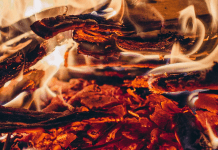
Earlier in the month we published our giant list of the 25 best books in occulture in 2016, our list of the 5 tarot and oracle decks reviewed and ranked from 2016, our list of the 11 best articles on magick we published this year, and the 11 best articles on occulture from 2016.
Of the 17 articles on religion and spirituality we published in 2016, these are the 7 most popular.
Click on the title link to take you to the full article to revisit articles you’ve forgotten, meant to read, or maybe haven’t seen yet if you’re newer to the site. (Welcome!)
We’ve had a fantastic year, and it’s all thanks to you — our supporters and readers.
Happy holidays!
 7. Working with multiple pantheons: A beginner’s guide
7. Working with multiple pantheons: A beginner’s guide
By Donyae Coles
Multiple pantheons may come naturally; many people say that they are “drawn” to gods and goddesses from various belief systems, but this isn’t to say that this process doesn’t take some preparation and work from the practitioner. Working with multiple pantheons can open the practitioner up to accidental cultural appropriation, or even offending the very deities that they wish to honour. Still, it is not impossible to do and may help to further a practitioner down their path or open up whole new view of magick for them.
6. Connecting with the dead
By Chris Alluan
Our beloved dead are not just spirits that we honor at Samhain or when we miss them. They are powerful spirits that can benefit us in many ways. Even in the afterlife they retain their wisdom and any skills that they had in life. If they were once doctors, they still have the ability to give sound advice on health and well-being. If they were architects, they will be able aide in building new structures. If they were artists or poets, they will be able to inspire you to create great works of art, similar to a muse. Most importantly, because they love you as family, they will protect you from harm, give advice, and aide you in healing.
5. Heathenry and Anglo-Saxon cosmology
By Marc Gaidin
Anglo-Saxon Heathenry, barring the separate Theodish belief, is sometimes called Fyrnsidu, and is a nebulous and lesser-understood branch of Germanic cultural Heathenry. As its name would imply, it finds its expression within a pre-Christian Old English context, as opposed to the more populous expression found in various Nordic iterations such as Asatru. While similar to Theodism, and informed by in part by a lot of the advances in that religious hierarchy, the discussion of Theodism is not the purpose of the article.
4. Satanism in music and devotional practice
Spanning many genres including folk, blues, rock, and metal, it is evident how much people are fascinated by the Prince of Darkness and Satanism. In my earlier article, “Satanism in music: Satan sets the tone,” we looked at how Satan has been portrayed in music throughout the years. His influence is everywhere.
Cultures of every kind have had their own style of music that they use for spiritual practices. It’s the same for Satanism, although each Satanist is free to choose the kind of music that is pleasing to them and they are not bound by rules or tradition.
3. Problems with whitewashing in worship
By Donyae Coles
A new movie, Gods of Egypt, has recently ruffled more than a few feathers as promos for the film were released and all of the gods from an African country were, more or less, white. You can look at this as just another example of Hollywood whitewashing and question why such a topic would be brought up in a magazine devoted magick, mysticism and spirituality, but the sad thing is, even in enlightened communities such as our own, this same sort of whitewashing happens in spiritual practice. This form of cultural appropriation is often overlooked but just as insidious and harmful as wearing an Indigenous headdress to a festival.
2. Portable shrines: You can take it with you
By Laura Perry
For years, whenever I traveled I carried my altar accoutrements in a drawstring bag that I wedged into a corner of my suitcase or backpack. Along the way, I prayed nothing would break or fall out and get lost. But since my spiritual practice is an integral part of my daily life, I rarely felt I could leave everything behind when I was traveling. I like to have a physical focus, even if it’s a small one, which means carrying some Pagan loot around with me when I go places.
1. Mysteries of Isis
By Mogg Morgan
If you know a little bit about me and my previous books on Egypt, focused as they have been on the god Seth, then you might be surprised that I have spent so much time researching Isis, his nemesis. By way of explanation, I think, because of his special character, Seth provides a holographic or fractal perspective on the entire ancient Egyptian mythos. Seth is supposed to know all of the gods innermost secrets, and threatens to expose them. If he is negative, then we can know them by a simple process of reversal. During one of my meditations on this material, I felt that I had been “instructed” or perhaps “called” to tell a particularly obscure episode in her story. That’s the mysteries after all.














